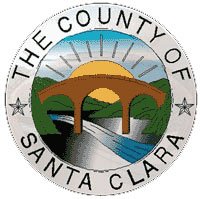Morgan Hill
– County farmers struggling to keep the region’s agricultural
history alive face a possible 50 percent increase in their water
bills this summer.
Morgan Hill – County farmers struggling to keep the region’s agricultural history alive face a possible 50 percent increase in their water bills this summer.
Critics of the Santa Clara Valley Water District, which spends 40 percent of its $240 million budget on salaries and benefits, say the water agency is overstaffed and takes rate payers for granted.Critics of the Santa Clara Valley Water District, which spends 40 percent of its $240 million budget on salaries and benefits, say the water agency is overstaffed and takes rate payers for granted.
District administrators, however, say the agricultural rate increases are needed to offset rising costs of importing water to fill the valley’s underground aquifers.
The proposed rate increase for farmers would result from the elimination of discounts for saving water and using less fertilizer. According to the district, between 60 and 72 growers participate in one or both of the programs. The participating farmers account for 70 to 75 percent of South County’s agricultural water usage, or about 6 billion gallons per year.
“It’s a low number of users, but a high level of usage,” said Darin Taylor, a senior project manager for the Santa Clara Valley Water District. “It would be a small savings, but over time that adds up.”
A small brigade of county farmers voiced opposition to the proposed rate hike at a public meeting Monday night at the Morgan Hill Community and Cultural Center.
Peter Van Dyke, who grows organic crops on 170 acres east of Gilroy, told district officials at the meeting his costs of doing business in the shadow of Silicon Valley growth are quickly becoming unmanageable. Higher water costs, he said, would affect his bottom line.
“It’s a tough row to hoe, so to speak,” Van Dyke said to water district officials hosting the meeting.
The district would save between $50,000 and $100,000 during the next fiscal year, Taylor said, if the incentives are phased out starting July 1. Farmers who receive discounts now would eventually pay $21.50 per acre foot instead of $14, an increase of roughly 50 percent.
“It’s just ludicrous,” said Jenny Derry, executive director the Santa Clara County Farm Bureau, an organization with ties to many of the county’s roughly 500 farms. “No one else is being asked to shoulder a 50 percent increase in one year … and it takes no account of investments farmers have made to improve their farms.”
A number of county farmers have participated in the water district’s mobile pump-test program to learn about the efficiency of their irrigation systems. In some cases, Derry said, farmers invested thousands of dollars in new equipment.
“It takes years of discounts to recoup that money,” she added.
Jan Garrod, a Saratoga grape grower and president of the farm bureau, said the district’s incentives for farmers to save water have worked well and should be left alone as the agency tries to balance its budget.
“The incentives help save water, and I urge you to continue that as long as you can,” Garrod told water officials at Monday’s meeting. “That helps keep the farm land there.”
Despite this year’s dry winter, water district officials justify eliminating water-saving incentives because the Central Coast Regional Water Quality Control Board has adopted regulations requiring growers to develop plans for meeting the same goals of reducing runoff and nitrate loading. Additionally, administrators question the effectiveness of providing discounts to promote water conservation.
District administrators justify the proposal as part of a larger recommendation to raise water rates for all North County and South County customers. Some 110,000 South County residents, defined as living south of Metcalf road, face a proposed 8.7 percent increase in their water bills.
North County residents face a possible 8 percent increase.
For most residents in South County who don’t have farms, the proposed increase amounts to roughly 69 cents per month, according to the water district.
The cities of Gilroy and Morgan Hill, who operate municipal wells, may pass the proposed increase on to local customers.
The water district board is expected to vote on the proposed rate increases in June.












